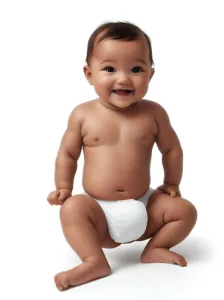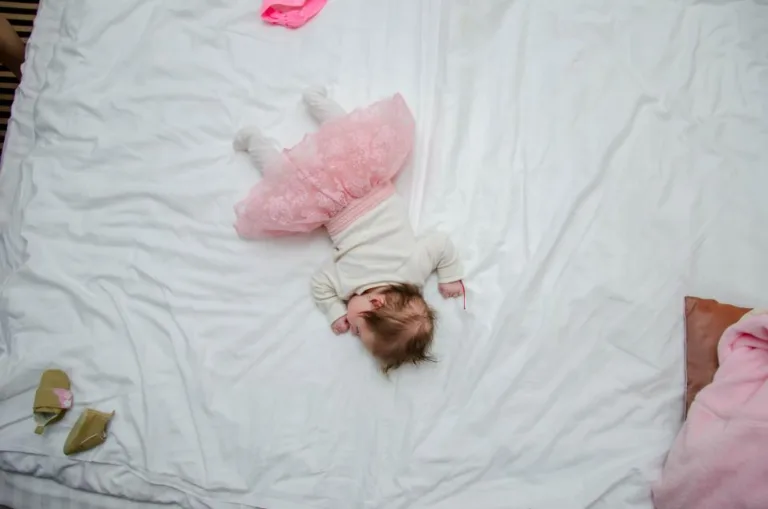The Importance of Proper Diaper Changing Technique
As a new parent or caregiver, you may underestimate the significance of mastering the art of diaper changing. However, proper diaper changing is essential for maintaining your baby’s hygiene, comfort, and overall health. This comprehensive guide aims to provide you with the knowledge and confidence to tackle this fundamental aspect of parenthood.

The Right Environment: Setting Up Your Diaper Changing Station
Choosing the Ideal Location
Selecting the perfect spot for your diaper changing station is crucial. Consider a location that offers ample space, accessibility, and proximity to essential supplies. This designated area should be comfortable and well-lit, ensuring ease and efficiency during diaper changes.
Assembling Necessary Supplies
A well-stocked diaper changing station is indispensable. Ensure that you have all requisite items at your fingertips, such as diapers, wipes, a changing pad, diaper rash cream, and a diaper pail for disposal. Storing these supplies in an organized manner will facilitate seamless diaper changes.
Sanitizing and Maintaining Your Station
Maintaining a clean and sanitary environment is paramount for your baby’s health. Regularly sanitize the changing station and replace disposable items, such as changing pad liners. Employing proper cleaning protocols mitigates the risk of infection and ensures a hygienic space for your baby.
Understanding the Different Types of Diapers
Cloth Diapers: Pros, Cons, and How-To
Cloth diapers, lauded for their eco-friendliness and cost-effectiveness, require a slightly different approach. They consist of an absorbent inner layer and a waterproof outer layer. Familiarize yourself with various cloth diaper types and fastening methods, such as snaps or hook-and-loop closures, to determine the optimal choice for your baby.
Disposable Diapers: Pros, Cons, and How-To
Disposable diapers, characterized by their convenience and disposability, are a popular choice among parents. These diapers employ superabsorbent polymers for maximum absorbency. When selecting a disposable diaper, consider factors such as size, fit, and additional features (e.g., wetness indicators).
Specialty Diapers: Swim, Overnight, and More
Specialty diapers cater to specific needs, such as swimming or extended nighttime use. Swim diapers, designed to contain solid waste, are essential for water activities, while overnight diapers offer enhanced absorbency for a peaceful night’s sleep. Evaluate your baby’s unique requirements to choose the appropriate specialty diaper.

Identifying the Right Time to Change a Diaper
Recognizing the Signs of a Wet or Dirty Diaper
Timely diaper changes are crucial for your baby’s comfort and well-being. Watch for cues, such as fussiness, squirming, or an unpleasant odor, which may indicate the need for a diaper change. Regularly inspect diapers for wetness or soiling to avoid prolonged exposure to moisture.
The Optimal Diaper Changing Schedule
Establishing a consistent diaper changing routine is beneficial for both you and your baby. Aim to change your baby’s diaper every two to three hours or immediately after a bowel movement. Adjust this schedule according to your baby’s specific needs and developmental stage.
Balancing Diaper Changes and Sleep
Navigating diaper changes during sleep can be challenging. To minimize disruptions, opt for a dimly lit environment and maintain a gentle, soothing demeanor. Avoid changing a mildly wet diaper during sleep unless absolutely necessary, to allow your baby to establish healthy sleep patterns.
Mastering the Diaper Changing Process
Preparing for a Smooth Change
Organization is the key to a successful diaper change. Ensure all supplies are within reach and place a clean diaper underneath the soiled one. This preparation minimizes the time your baby spends exposed and vulnerable, reducing the likelihood of accidents.
The Step-by-Step Guide to Changing a Diaper
- Lay your baby on the changing pad, ensuring their safety with a strap or your hand.
- Unfasten the soiled diaper and lift your baby’s legs, gently wiping away any residue.
- Slide the clean diaper beneath your baby, positioning the back edge at waist level.
- Apply any necessary creams or ointments to protect against diaper rash.
- Bring the front of the diaper up and secure it in place with the fasteners.
- Dispose of the soiled diaper in a diaper pail and wash your hands thoroughly.
Handling Unexpected Mishaps
Accidents are bound to occur during diaper changes. If your baby soils the changing area, remain calm and clean the area promptly. Employ distractions, such as toys or songs, to keep your baby entertained and secure during the cleanup process.
Dealing with Diaper Rash: Prevention and Treatment
Identifying the Causes of Diaper Rash
Diaper rash results from factors such as friction, moisture, and exposure to irritants. Identifying the cause of your baby’s diaper rash is essential for implementing appropriate preventative measures and treatments.
Common Diaper Rash Remedies
Diaper rash can be treated with over-the-counter creams or ointments containing zinc oxide or petroleum jelly. Regularly changing diapers, allowing for diaper-free time, and using gentle, fragrance-free products can help alleviate and prevent diaper rash.
When to Seek Medical Advice
If your baby’s diaper rash persists or worsens despite your efforts, consult a healthcare professional. Persistent rashes may indicate an underlying issue, such as a yeast infection or an allergic reaction, requiring specialized treatment.
Safety Considerations During Diaper Changes
Preventing Accidents and Falls
Never leave your baby unattended on a changing table, even for a moment. Always keep a hand on your baby during diaper changes, and utilize safety straps when available. Position supplies within arm’s reach to avoid turning away from your baby.
Ensuring Proper Hygiene
Maintaining impeccable hygiene during diaper changes is vital to protect your baby from infection. Always wash your hands before and after a diaper change, and use disposable gloves if desired. Regularly sanitize the changing area and any objects that come into contact with soiled diapers.
Managing Allergies and Sensitivities
Some babies may exhibit sensitivities to certain diaper materials or products. Monitor your baby for signs of allergic reactions, such as rashes or irritation, and consider using hypoallergenic or fragrance-free products if needed.
Bonding with Your Baby During Diaper Changes
Making the Most of Diaper Time
Diaper changes provide an opportunity for meaningful interaction with your baby. Maintain eye contact, smile, and engage in gentle touch or tickling to promote bonding and stimulate your baby’s senses.
Incorporating Games and Songs
Incorporate games, nursery rhymes, or songs into your diaper changing routine to create a positive and engaging atmosphere. These activities not only entertain your baby but also support cognitive and emotional development.
Building Trust Through Consistency
Establishing a consistent diaper changing routine fosters a sense of trust and security in your baby. Be gentle, patient, and responsive to your baby’s needs during diaper changes to create a nurturing and reliable environment.
Transitioning to Potty Training
Recognizing Signs of Readiness
Before embarking on the potty training journey, look for signs of readiness in your child, such as staying dry for longer periods, showing interest in the toilet, or expressing the need to use the bathroom. These indicators suggest your child may be prepared for this developmental milestone.
Introducing the Potty
Introduce the potty to your child in a non-threatening manner, allowing them to explore and familiarize themselves with it. Encourage your child to sit on the potty, fully clothed initially, to build comfort and confidence.
Encouraging and Supporting Independence
Support your child’s growing independence by providing praise and encouragement throughout the potty training process. Remain patient and understanding, acknowledging that setbacks are a normal part of this developmental stage.
Traveling and Diaper Changes on the Go
Packing the Perfect Diaper Bag
A well-prepared diaper bag is indispensable when traveling with your baby. Include essentials such as diapers, wipes, a portable changing pad, a change of clothes, and diaper rash cream. Consider adding a wet bag for soiled clothing and a small toy for entertainment.
Changing Diapers in Public Spaces
Changing diapers in public can be daunting, but with the right preparation, it becomes manageable. Seek out designated changing facilities, or if unavailable, find a clean, discreet location. Use a portable changing pad for added hygiene and privacy.
Managing Long Flights and Road Trips
Diaper changes during extended travel require additional planning. For flights, pack ample supplies in your carry-on luggage and utilize airplane restrooms for diaper changes. On road trips, schedule regular stops for diaper changes and ensure your diaper bag is easily accessible.
Conclusion: Embracing the Art of Diaper Changing
Mastering the art of diaper changing is an essential aspect of parenthood. By creating an efficient diaper changing station, understanding different diaper types, and honing your technique, you can ensure your baby’s comfort and well-being. Embrace this opportunity to bond with your child, and remember that patience and consistency are key to success in this fundamental parenting task.








